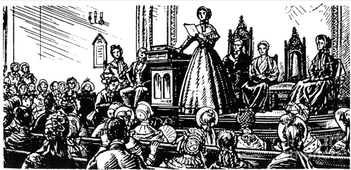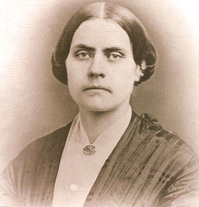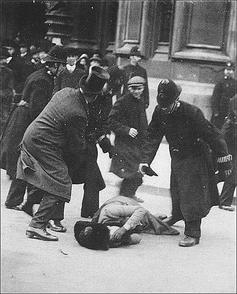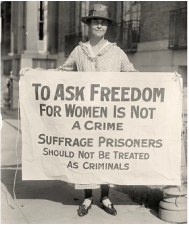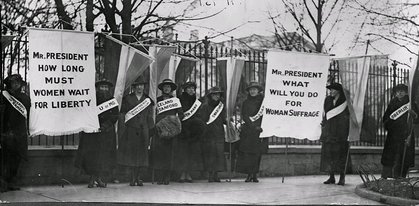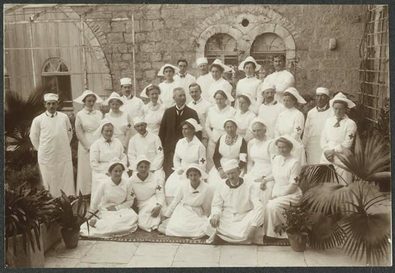Lesson 7: Women's Suffrage
FOCUS ACTIVITY
I Can Do It!

I can describe how women fought for and gained the right to vote.
TEACHING ACTIVITY
Guided Reading

DIRECTIONS: We are now going to read today's text as a class. Remember to follow along. I will select readers randomly by calling out numbers. Important terms, people, places, and events are highlighted in the toolbox.
THE WOMAN'S FIGHT
Around the World
|
During these years, our country was involved in World War I. Women played a large part in the war effort, as nurses and in many other roles. Their contributions to the war also helped show the people that women were important citizens too.
During this time, some states and territories had begun to grant women the right to vote, but not the country as a whole. Meanwhile, women in many other countries were winning their own right to vote. New Zealand women gained the right to vote in 1893. Women won the right to vote in Australia in 1902. Canada, Austria, Denmark, Czechoslovakia, Ireland, Scotland, and others followed.
|
The Opposition
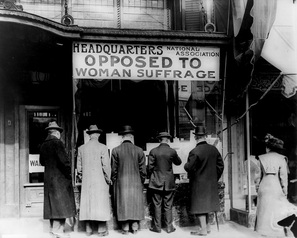
Still, many people in the US opposed making women's suffrage the law of the land. A group called the National Association Opposed to Woman Suffrage was formed in 1911 to fight the suffragists. This group, and others that opposed granting women the right to vote, were well organized and well funded too. People who were opposed to women's voting rights used the term "suffragettes" to make fun of the women who were campaigning for their rights. Cartoons in magazines and newspapers and on postcards tried to make the women look foolish.
The Win
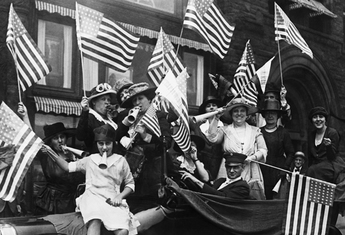 Celebrating the passing of the 19th Amendment
Celebrating the passing of the 19th Amendment
The struggle for the right to vote was not an easy one. It had taken a long time, but, finally, in 1920, the battle was over. The 19th Amendment to the Constitution was passed. It declared that women did have the right to vote. By this time, Susan B. Anthony, Elizabeth Cady Stanton, and nearly all of the other women from the Seneca Falls Convention had passed away. They had not lived to see their dream come true. One woman from that convention, Charlotte Woodward, was still living in 1920. At the age of 81, she voted for the first time.
WHOLE GROUP ACTIVITY
Understanding Concepts
DIRECTIONS: In this activity, we will discuss the answers to the following questions:
- Where and when did women first publicly discuss that they were entitled to equal rights under the law as citizens of the United States?
- What was the National American Woman Suffrage Association (NAWSA)?
- Who was the famous women's rights activist and leader of the NAWSA?
- Who are people hired by a business or a cause to persuade legislators to support that business or cause?
- What term is used for a group of people join together to achieve a common purpose?
- What strategy did suffragettes use when they refused to obey laws so that the government would pass laws allowing women to vote?
- Who was the suffragist that led the National Women's Party that picketed the White House in 1917?
- What group formed in 1911 to fight the suffragists because they opposed granting women the right to vote?
- What law finally gave women the right to vote in 1920?
- What word in the reading (not in the toolbox) would you deduce means - an individual who expresses their ideas by getting involved and taking action?
SMALL GROUP ACTIVITY
Form Your Own Opinion
DIRECTIONS: In this activity, we will watch the video clip below together. Then, in your small groups you will discuss what it is the actor is performing and what it is that she is saying. After the video, you will have 5 minutes to prepare and be ready to discuss your answer with the class.
INDIVIDUAL ACTIVITY
Exit Pass
DIRECTIONS: In this activity you answer prove that you have met the Lesson Mission by answering the essential question of the lesson. Please complete the exit pass below. This question is worth 10 points and is graded for accuracy. You MAY use the reading and any notes you took.
HOMEWORK
Finish the Lesson and Family Time
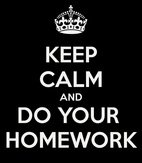
Remember, you have homework every night in Social Studies. First, share with your family what you learned in class today. Second, review your exit pass response to each lesson and the lesson vocabulary to help you study for the test.
